-
Posts
3,188 -
Joined
-
Last visited
Content Type
Forums
Detector Prospector Home
Detector Database
Downloads
Posts posted by Jeff McClendon
-
-
With the 13” coil, I can see why running reactivity at 2 might help…….bigger coil surface plus salt/iron mineralization is begging for higher reactivity. If that enables you to raise sensitivity then it cancels out the depth lost from raising reactivity.
Salt sensitivity at 3 sounds crazy since it is another depth killer.
I know you are allergic to ground grab ground balancing the Equinox and prefer to run in tracking for good reason.
I also understand that you set discrim on Deus 2 above 20???
Have you tried ground grab ground balancing Deus 2? The key to it is to start gently pumping the coil before pressing the pinpoint button especially with a big coil like the 11 or 13X11”. Tom D. never got that nuanced technique from reading his Deus 2 blog.
I have never liked the tracking ground balance much on Deus 2.
Equinox 800 running tracking ground balance seems to work well for you Dave on the wet sand to surf transition.
-
Thanks Simon!!!!!
What a nice looking and sounding PI.
Looks like you could swing it with one finger and thumb and with a loose grip.
How is the USB battery connection and battery consumption.
It seemed to have no problems hitting a couple of those NZ flakes that appeared to be 0.03 grams or smaller.
Awesome.
-
Yes, only certain PIs with the right coils are going to hit 13 to 18" 3 to 5 gram targets whether the soil is mild or mineralized from my experience.
Not disturbing the soil very much when conducting the testing really helps too. I am lucky that I have that nice erosion cut for testing that is within 10 miles of my home and EMI is reasonable most of the time for PI and high gain SMF VLF detectors.
It is not as good as inert sand but it gives me some fairly realistic results give or take an inch to 3 cm.
The latest simultaneous multi frequency VLFs with very little filtering can easily hit 10" 3 to 5 gram targets at this site and even have good IDs using 11" coils. They can go a bit deeper but IDs are unpredictable.
-
49 minutes ago, Doc said:
The warbling threshold is weird. In my area if I have a warbling threshold it would be because of EMI. I never had that issue with the SDC2300. I did find a lot of small gold with it, and like I said I was amazed at how immune it was to mineralized ground. While generally the ground here is pretty mild there are a couple of spots that I have never been able to run a detector in, and the SDC2300 paid no attention to the severe conditions and found gold.
I just wonder if you had a funky SDC2300?
DocSome PIs handle 0.1 gram to 1 pound sized magnetite chunks scattered all over and in the ground better than others. The SDC 2300 and even the GPX 6000 go off on them big time. Throw in rocks from the Mantle and alkaline conditions…….maybe you get the picture. Turning down sensitivity enough to semi stabilize them neutered them to the point that a GPX 4000 to 5000 or a good VLF did just as well or better on small gold.
Running the E1500 at these sites might be fun
I never had any ground mineralization problems running those PIs in Arizona.
-
6 minutes ago, Gold Catcher said:
I never rely on the auto track for longer periods of time and do a quick GB fairly often (sometimes every 5min) if the ground is very inhomogeneous. Never had a problem with it.
I had to use the quick GB button a lot more often than every five minutes.
-
24 minutes ago, Gold Catcher said:
Spot on Doc. I do want to remind all that the SDC was made for a very specific purpose, namely to outperform VLFs in highly mineralized soil on shallow fast gold. The MPF timings were made exactly for this purpose, and the 8 inch round is the ideal combination partner. I don't know about the AlgoForce timings, but the SDC MPF gives this machine a distinct advantage over others in my fleet, specifically for these situations. I still love my SDC. Yes, clunky, perhaps outdated, ergonomically a 0 out of 100, but what a beast! Also, extremely robust and can tolerate beatings without any problems. Still made with the old fashion ML high quality/reliable construction (wish it would come back...). The battery issue never bothered me as it was a simple fix. Overall, the best option for me for small washes with shallow gold in the Sierra Nevada and the Mojave desert.
GC
I am just going to speak for me and not "all".
I mentioned the warbling threshold on the SDC 2300. That threshold warbled on every audible setting because the SDC's tracking ground balance system was incapable of keeping up with the high mineralization at the sites I was often detecting. I only had to drive 300 miles round trip to Colorado and Wyoming sites (with lousy mineralization) instead of 1600 miles round trip to get to areas in Arizona where the actual ground mineralization (not the hot rocks) are significantly milder.
The Goldmonster 1000 also had similar issues with it tracking ground balance system at these sites closer to where I live. So, at least for me, these two tracking ground balance detectors failed to live up to Minelab's claims of one size fits all ground conditions. The SDC2300 was outperformed at these sites by any dual channel ground balance PI that could do a ground grab ground balance. The GM 1000 met the same fate. An XP ORX, Equinox 800 and Goldmaster 24K found lots more gold for me at these sites simply because I could be in control of their ground balancing.
-
1 hour ago, Doc said:
Hard to find anything that beats the SDC2300 as far as being immune to hot ground. However keep in mind I am in the U.S. our ground is not as harsh. However, I do have spots where the GPX 5000 would scream and the SDC2300 would purr. Very simple machine to use. My big gripe was that dinky coil. Can you think of the number of times you have to swing an 8 inch compared to a 14 inch. Makes my arm sore just thinking about it.
DocMy biggest gripe with the SDC 2300 was the weight and the threshold warble. Even using your products, I just couldn't get comfortable swinging that detector for long unless the terrain was flat and vegetation was sparse. Otherwise, I just wanted to jettison that detector as quickly as possible especially on high altitude, boulder strewn hillsides full of trees and shrubs. That threshold drove me nuts and there were not enough threshold setting levels.
-
1 hour ago, araratgold said:
One thing that stood out for me is that the SDC easily beat it on all targets with the 14x9 Coiltek vs 12 evo, and the 6000 with its standard 11 inch smashed it for depth. The SDC does have another advantage, that is automatic ground tracking, and also has exceptional handling of mineralisation.
Will be interesting to see how the AlgoForce E1500 goes with bigger coils, in real ground conditions.
Interesting too in this test is just how poorly the QED did !
RickSDC 2300 is set on Max sensitivity. GPX 6000 is also set to A+ or Max in Normal. E1500 is not. E1500 using the 12" Evo is in Fine mode. I would have used it in Normal for maximum depth on larger targets. Just little things but they could make a difference.
Like I said earlier, I absolutely don't care how it compares to the GPX 6000 especially on deeper targets. I do care how it compares to the SDC 2300 on any target.
-
9 hours ago, RONS DETECTORS MINELAB said:
There’s another report on the Aussie forum describing how well the conductivity target ID is working on this E1500 PI. Also mentioned is some comparisons of different detectors on a range of targets.
here is the most recent Australian report:
-
On 2/3/2024 at 3:59 PM, Gold Catcher said:
ML will remain the tech leader for now, and it might not be fair to compare a $1500 detector with their flagship gold machines. Rather, the AlgoForce will be a great low-cost entry PI with reasonable performance, but with huge added benefit of "coil freedom". So, a standalone detector on its own rights. More interesting will be what is coming next. However, it will be a tall order to meet/beat the performance of the 6k and 7k, but they could be up for it eventually. But for now, Bruce Candy is still winning when it comes to cutting edge performance (from all that is reported thus far), albeit it comes at its price. 🙂
GC
For me, the only performance the AF E1500 has to compete with match or beat is the SDC2300.
It totally beats it for coil selection, having a display and good settings adjustments and most of all ergonomics and price.
Anything more than that is definitely icing on the cake.
The SDC2300 has it beaten for being waterproof. Maybe AlgoForce will take the next mythical step and waterproof the E1500 into an All Terrain version.
Comparing it to a 5000 to 8000 US dollar detector as far as overall performance is way beyond its scope in my opinion.
Using the appropriate coils, if it can easily detect 0.03 gram flakes or even smaller and also hit a 5 gram US nickel at 18 to 20" and maybe even identify it with a conductivity target ID.......I will be impressed.
-
Some of the audio characteristics as far as sharpness and clarity differences between the Axiom and GPX 4000 may come down to the wireless headphones being used in both the small and larger target tests.
I am using a set of Quest wireless headphones and transmitter with the GPX 4000.
I am using the Garrett MS-3 Z-Lynk wireless headphones with the Axiom.
I don't care too much for the MS-3 Z-Lynk sound quality and that may also be slightly skewing the audio results in these two tests.
-
It thawed out enough today to do a much deeper test in a semi frozen freshwater beach erosion cut using the Axiom with 13X11" Mono coil, GPX 4000 with Coiltek Elite 14X9" Camo Mono and Deus 2 9" DD coil.
I wanted to see if the pulse induction Axiom and GPX 4000 using similar settings and similar sized coils had similar performance. This is important to me since the Axiom is the new detector on the block and it sure is a joy to operate and swing. No worrying about craning my neck to see the GPX front and back panels, worrying if I have accidentally bumped a toggle switch and in the case of the 4000 with no backlight.....trying to see what the display says and then getting strapped in for the ride. None of that is necessary with the Axiom. All the controls are right in front of me to easily see and manipulate and the ergonomics are off the chart good. But how is its performance on deep coins and is that transferrable to deeper jewelry, relics and deeper gold nuggets?
Deus 2 once again, was along for the ride. It did great giving an iron mineralization reading and for checking the test area for any obvious targets and clearing them out. So, I ran it through the test knowing full well that it was way out of its league due to its 9" coil and it being a VLF.
The test was on a 0.5 gram Liberian 24K gold coin, a 5 gram US nickel and a 5.75 gram US quarter (a high conductive target)
I dug three notches about 2" into the cut that these targets could easily fit into. I made one notch at 9" from the surface/swing area, a second notch at 13" and the deepest notch at 18". The Fisher F-Pulse pinpointer in the photo is 9" long.
iron mineralization again was pretty high using the Deus 2's iron mineralization meter (lower left display bar graph). You can actually see the black sand on the surface of this beach and in some of the photos.
I started with the Axiom using its 13X11" mono coil using the Normal timing/Slow speed with sensitivity on 3 as 4 was just a little unstable for the EMI and ground conditions. Ground balanced easily and stayed fixed. Threshold was just audible.
I tested the 0.5 gram gold coin at 9" depth. The Axiom with 13X11" coil had no problem giving a text book high/low fairly sharp audio response on all sweeps. It wasn't loud, but it was easily a no doubt Dig Me type signal for me. Raising the coil an inch or so and the target response became very iffy.
Next I tested the 5 gram US nickel at 13" depth. The Axiom responded with a solid, sharp, text book high/low response on all sweeps. Again, these responses were not loud, but they were very obvious, no doubt responses.
I moved the 5 gram US nickel to the 18" notch. The Axiom responded with a smooth, broad, one way low/high response swinging from right to left. The response swinging from left to right was much shorter and mostly a higher tone. I could have mistaken this response for shallow ground noise, but since it was very repeatable I probably would have dug that target.
The US quarter at 18" had a similar but fainter response. Digging that target........maybe.
I then did the same tests with the GPX 4000 running in Normal/General/Slow with gain on 10 and with the threshold barely audible. The Coiltek Elite 14X9" Mono coil was very quiet after doing a frequency scan and ground balanced easily and stayed that way throughout the testing.
The 9" deep 0.5 gram gold coin sounded sharper on the GPX. The response was high/low as expected but it was a bit more clearly defined and obvious than on the Axiom. Digging that response all day. Raising the coil about 1" resulted in a very iffy response.
The 13" deep 5 gram US nickel also sounded a bit sharper and clearer than the Axiom, but the overall high/low response actually seemed to have less volume/signal strength.
The nickel at 18" did not have a broad response like the Axiom. It was very short and faint, but clearly something under the coil. Much softer response than the Axiom.
The 5.7 gram US quarter had a similar response at 18" with just a quick rising tone above the threshold.
Deus 2 using its 9" coil running FMF Goldfield, no Disc IAR, sensitivity 95, reactivity 2, audio response 4 could barely hit the 9" deep 0.5 gram gold coin and I mean barely. Without headphones, I would not have heard that response or even looked at the display for a possible target iD. Understandably, it could not hit any of the deeper targets. No mode could hit them. I expected that so no surprise.
Once again, the Axiom really held its own against a fine pulse induction detector like the GPX 4000 setup similarly.
-
45 minutes ago, EL NINO77 said:
Jeef..have you tried increasing the IAR disk in the gold program in Deus 2?..from 0 to 1,2,3 and with what results?. on nuggets and from the results on coins...
The mineralization meter on the Deus 2 indicates... that even a VLF detector can be reasonably successful here..But I also believe that PI detectors Axiom and GPX 5000...are simply better here and have a better depth reserve ...
Thanks for this test and comparison.👍....but like others, I'm also looking forward to your next in-depth detector test in this field...

I use Deus 2 and ORX for very small nugget gold prospecting. Using any kind of iron discrimination on sub 0.1 gram gold targets is "iffy" at best and can result in masking or in turning small gold nugget boderline non-ferrous responses into ferrous responses more easily depending on the level of ground mineralization and depth.
Disc IAR works really well for larger non-ferrous targets, especially those that are not low conductors that have target IDs close to the ferrous range of target IDs. I often will use my Deus 2 in Goldfield or ORX in one of its Gold modes with Disc IAR set fairly high and iron volume on when I am hunting for mid to high conductor coins/relics in surface to 8" deep iron/nail infested older sites.
-
The Garrett Apex is not waterproof and its simultaneous multi frequency technology is not on the same level as the Nokta, XP and Minelab SMFs.
For your price range your choices are the Nokta Double Score, Nokta Legend, Quest V60, Quest V80 and the Equinox 700. All are fully waterproof, have good European support and are good choices for your budget.
The Minelab X-Terra Pro is a decent detector for saltwater beaches and snorkeling according to some reports on this forum and the price is definitely right but target IDs will not be as accurate on deeper targets compared to the other detectors listed because they have simultaneous multi frequency operation and the XT Pro does not.
Midalake is a full-time moderately iron mineralized saltwater beach hunter. He knows what detectors work well for him.
I am not a full-time saltwater beach hunter. I have used the Nokta Legend and the Equinox 700/900 at saltwater beaches. They did just fine for someone like me that just wanted to do some occasional beach detecting. I have also owned two different Quest detectors and I was very impressed with them.
-
On 1/26/2024 at 10:47 AM, Iffy Signals said:
New User, Saying Hi All. 🫣
The “eyeballs I attracted” with my Versa videos were also from RUTUS. When the testing videos can help the end user make a decision (potentially saving them money, or moving ahead with a purchase) and equally important a company moving ahead with an update based on my findings.. Those are the only views I am looking for.
*The next Versa update is already in the works.
Take Care, Mike
Hi Mike,
It is great to see you here on this forum as a posting member. Hopefully you will stick around and even do an introductory post in the "New Members" topic.
I can only speak for myself here but you are one of the few USA based metal detector review YouTubers that I subscribe to and wholeheartedly respect for your honesty, sound methods and most of all for your fairness, integrity and humility. You don't make any statements about yourself, your abilities or the great finds you have made. You let the detectors speak for themselves with very little "influencer" commentary. How a detector performs in your testing is clear and obvious.
I want to personally thank you for the fair minded, no BS approach you took with Nokta when urging them to include user accessible iron filter settings. That turned an excellent detector into a worthy top of the line detector that really can do it all comfortably now.
I have been sort of watching the Versa "drama" a little. I get tired of the "Reality TV" aspects of some US based review influencers pretty quick. I have not watched your Versa videos yet but I will soon.
Some of the latest detectors are so feature rich and good that it is jarring when they don't work perfectly right out of the box for new users and reviewers who then try to find an online manual that may or may not originally be in English and may or may not be for the same software version as the detector in hand. That is just the way it is now.
Thank you for keeping it real, fair, honest and for being brutally honest when you need to. The metal detecting community seriously needs reviewers like you.
-
11 minutes ago, FishBamboo said:
Thanks for the test results. Glad I didn't sell my 5000. I agree with Phrunt "next step is to go deeper until you get a winner".
Like I just said, I am not interested in a winner.
The Axiom is the detector I would use for most detecting unless I had to go after a target a meter deep. I would need a bigger coil for my GPX 4000 for sure. My biggest is 14X9". I bought this 4000 recently because it was available at a ridiculous $800 US price with two good batteries and two coils. I didn't really need it, but now I have a fine backup or loaner when one of my grown up kids goes with me.
If you haven't picked up an Axiom.......the balance and feel of this detector is incredible. Minelab's GPX 6000 has good ergonomics but the Axiom is on a whole different level.
So, the Axiom is easily the equal of the GPX series on smaller targets with similar sized coils. That was important for me to find out.
Deep test comes later when the ground here thaws out.
-
2 hours ago, phrunt said:
Good testing, the next step is going deeper until there is a winner!
If the Deus 2 is holding its own, the PI's should be able to keep going a fair bit deeper yet.
Sounds like you've got a good combination of detectors now for your soil type.
Thanks Simon.
I did this little test to prove three things to myself and anyone else that wants to know.
The Axiom is at least as sensitive as the GPX series on smaller targets. I was running it very conservatively.
The GPX 4000 is quite the detector and can still hold its own today.
Deus 2's gold prospecting mode and even the Mono mode running 45 kHz, set wide open -6.4 disc, using VCO audio and the 9" coil can hit some deep coin sized targets even in the crappy dirt I was testing in. It's basically beep/dig but that's okay. However, its normal default FMF discrimination modes simply can't handle that dirt nearly as well.
I will do a test soon with a Coiltek 14X9 on the GPX 4000 and the Axiom with its 13X11. That should be fun.
I am not looking for a winner. I know which detector I would pickup and use given a choice.
Holding, swinging and detecting with the Axiom is a real pleasure. It's like using a finely tuned musical instrument that not only plays well, it feels great to use as if it was fitted just for me. I don't think I have ever been able to think that about a GPX 4000 to 5000. They detect well but the ergonomic design is just ridiculous.
-
I did a quick in the ground depth test today in a freshwater (frozen) lake beach cut using the Axiom with 11X7 Mono and DD coils, GPX 4000 with an older Nugget Finder 10X5" mono and Deus 2 using its 9" coil. Deus 2 was really along for the ride. I used it to test for iron mineralization and for targets in the test area so I tested these targets with it too.
I had a 0.03 gram nugget at 2.5" depth, a 0.15 gram nugget at 5" depth and US clad dime (2.27 grams) and a US nickel (5 grams) at 10" depth. I had these targets taped to some 13" long shims and they were stuck about 2" into the vertical wall of the cut. Photo just shows the test setup. I only tested one target inserted into the cut at a time.
Iron mineralization was moderate to high as shown by the Deus 2 iron mineralization meter (graph at bottom left of display screen).
I first tested the GPX 4000 using General/Normal Mono coil setting with Gain on 12. That little Nugget Finder 10X5 coil gave clear, soft hits on both gold nuggets and also easily hit both US coins at 10" depth.
Next I tested the Axiom with the 11X7" focused core DD coil running in Fine/Slow with gain on 4. I had no problems ground balancing this DD coil at this site. The responses on both gold nugget targets were faint and audible but they were not as sharp as the GPX 4000 responses with the Nugget Finder Elliptical. The Axiom DD had strong, clear responses on the 10" coins.
Next was the Axiom with the 11X7" Mono coil running Fine/Slow with gain on 4. No problems ground balancing. The responses on the 2.5" and 5" deep nuggets were more sharp and rivaled the responses of the GPX 4000 with the 10X5" Nugget Finder. The Mono coil also gave strong, clear responses on the 10" US coins.
Deus 2 using FMF Goldfield and the Mono program set on 45 kHz, Pitch tones, -6.4 disc, had almost identical responses on the 2 gold nuggets. The targets responses were a bit faint but clearly audible. For me anyway, definitely "Dig Me" responses. Both programs were also able to elicit a response over the 10" deep coins. They were not strong responses but at least FMF Goldfield had enough information to throw up some fairly accurate target IDs occasionally on both coins. I also gave the Sensitive and Deep High Conductor programs a chance to hit those coins..........absolutely no response.
Hope this helps anyone that was wondering about the Axiom especially and even Deus 2. Both are very capable detectors in high iron mineralization even on small targets.
GPX4000 with that ancient Nugget Finder elliptical......amazing.
-
Just now, Steve Herschbach said:
Got ya. I guess it just remains to be seen if that is a problem that needs a solution.
I have personally been a problem looking for a solution all my life! So it doesn't surprise me that my metal detecting tendencies mirror that.
-
11 minutes ago, Steve Herschbach said:
EMI is the main reason for me anyway along with ground handling.
Since I like to use PIs for coin, jewelry and relic hunting, that is not always done at sites with little or no EMI. Just the opposite. Having a DD/Cancel option eliminates most of the EMI and does a good job of eliminating/discriminating smaller trash targets when I am concentrating on bigger coin/jewerly/relic targets.
-
***Lots of posts as I was writing this so, there is some redundant stuff in this post.***
I have been on the budget PI turntable for quite awhile. Under $3000, less than 4 pounds weight with a decent sized coil attached like an 11" round, it won't fall apart if I happen to drop it from a foot off the ground, I don't have to modify it or its power supply to get decent performance, was all I was asking for.
I tried all of the White's TDIs both stock and modified and with modified battery packs, wouldn't ground balance due to single channel ground balancing on tough ground etc, and sensitivity to small gold was a constantly moving target.
The QED, a user interface nightmare, rarely ground balanced on tough ground-single channel again and pressing the up/down button after getting back to MGB from wherever it was set...OMG, great ergos but only with a smaller coil, for God sake don't drop it!
SDC2300, ergonomics of a 4X6X14" slab of concrete, crazy threshold, crazy coil selection, not enough controls.
GPX6000, good ergonomics, poor DD coil selection considering half of its search modes are for DD coils, not enough controls, way too sensitive to EMI, hot rocks and hot ground (again, crying out for more DD coils from somebody!) Ridiculous price.
Now I have an Axiom. I like it very much especially since I got it for really close to the $3000 price since it was a demo unit. Great user interface and display. Great ergonomics too. I still have serious questions about the focused core DD coils and those DD coils and the iron audio function were a big selling point for me since I like to use PIs for coin, jewelry and relic hunting.
I also have a GPX 4000. Took the control box off of the shaft and attached it to my harness right next to the battery pouch. Awkward but it works and since it is a 4000, there are not that many settings to change. I can swing it all day and the coil selection is endless. Love the Mono, DD and especially Cancel functions for EMI.
Now the Algoforce. This detector has some fantastic features like dual channel ground balance one button push ground grab, pinpoint function and conductivity target ID especially for coin/jewelry/relic hunting, vibrating handle for hearing impaired, good search modes, and I really like the coil calibration feature and coil compatability. I don't like no DD coils or a Cancel feature. I especially like the display right there where I can see it like it should be. Yeah, it looks like the PL4 QED but only superficially. The E1500 control unit and display make the QED control box and display look like something from the 1970s.
I don't really care about having the best PI on the planet since that would be made by Minelab and out of my price range at this point whether Minelab releases a successor to the GPZ or not. No, I am not going to be buying or swinging a 5 to 7 pound detector either at my age.
I look forward to seeing reports and some videos of the new Algoforce E1500.
-
7 hours ago, JohnnyDigs said:
I totally understand what I quoted you on this was a separate question
I respect your decision not to make any claims if you don’t want to I’m just trying to learn and see if there was anything I can be listening for other than just ferrous and nonferrous. Thank you for your time 🙏🏻
You asked for some more hints so here are a few.
Practice a lot on the coins that you can find in your area. Learn their target IDs well. Learn the target IDs of the aluminum trash in your area and by that I mean the regularly shaped trash like the wide variety of pull tabs, small and large aluminum screw caps. Forget about learning random aluminum canslaw and foil wrapper trash. It sounds so good that you will dig it if you are going after good targets like gold jewerly or bullets that share target IDs with all of that aluminum. Concentrate on the regularly shaped common targets like coins, gold and silver rings ( if you have any) and pull tabs and learn how the sound of these rounded solid objects starts, stops and the length of the silence in between along with whether they sound hard edged or kind of soft edged, elongated and squishy. Practice with the coil swinging right over them (double and triple beeping) and then with the coil farther away so that there is only a single beep with each directional swing. Also practice with the outer edges of the coil too and see if you hear a difference.
-
24 minutes ago, JohnnyDigs said:
Yes that I did and I was also in all metal with my tone break set in between 9-11. But my question is if you can hear a difference between say a coin and a piece of trash metal like brass or aluminum. Is there something I should be listening for.
example- when I was in those settings and swinging away, I sometimes I hit a target that sounds clean and strong thinking it was a coin but when I dug it up it be a small piece of brass. Is there a sound that would give me the ability to really tell if it’s a coin or just some junk metal. I mean not that I’m not digging it up anyway but I guess I’m trying to see if it’s something I need to listen and or just learn in time meaning, maybe it’ll be scratchy, or a mix of grunt with a high tone beep or is it always going to be either a beep or a grunt and never a combination. And I also understand that if it is close to my tone break, it might do that but being way above the tone break, I’m asking if there is also other sounds, I can look out for that. Will give me hints on whether if it’s a tight, circular object or Elongated or on its edge or whatever
The statement you quoted me on was about telling the difference between ferrous/non-ferrous using Pitch tones.
I did not make any definitive claim about me personally telling the difference between a coin and aluminum trash using Pitch tones and I am not going to either. I merely stated that if You practice, you might sometimes be able to with a little glance at the target ID.
I generally use 6 or 60 tones on shallow to mid depth coin sized targets when coin/jewelry hunting. There is a lot of information within those tones about certain regularly occurring coins and certain, regularly occurring aluminum objects like pull tabs and aluminum screw caps that can be learned if you want to go to the trouble. Most people don't want to go to that trouble and some people will probably start taking shots at me for even saying it's possible.
-
2 hours ago, JohnnyDigs said:
Just out of curiosity, how? Will there be a little grunt or break or some sort of chirp? I really like pitch because I feel like it separates really well I just know I’ll be digging way more which I’m ok with also but I’m just curious
Pitch Tones (plural) on the Legend is 2 tone, ferrous/non-ferrous audio and the tone break will occur where it is set by default in each Park and Field mode. Make sure you are using the A or G discrimination pattern and iron volume level is loud enough to hear. Try it out on some test targets to get the volume levels right for your hearing.



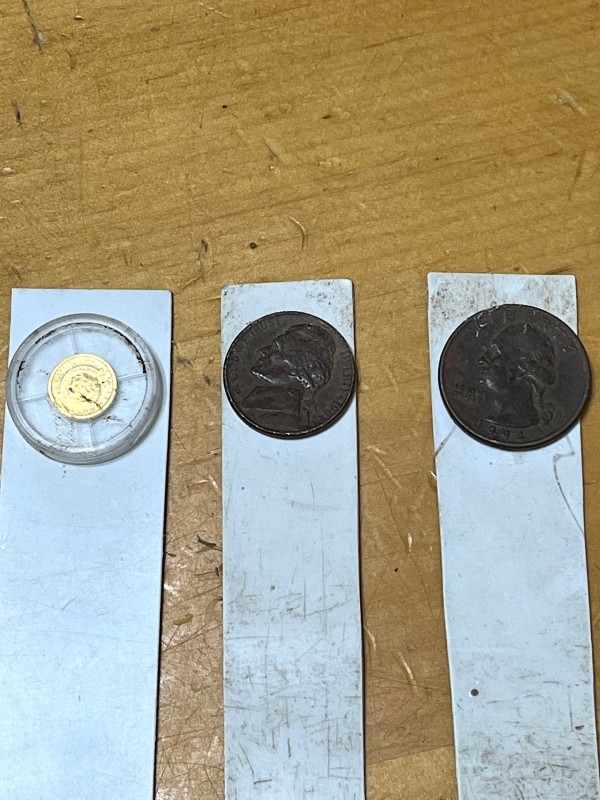
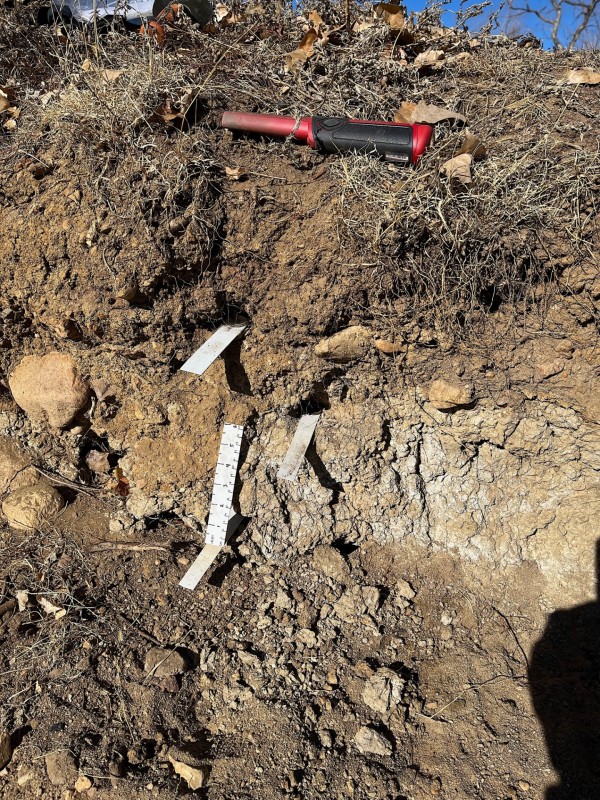
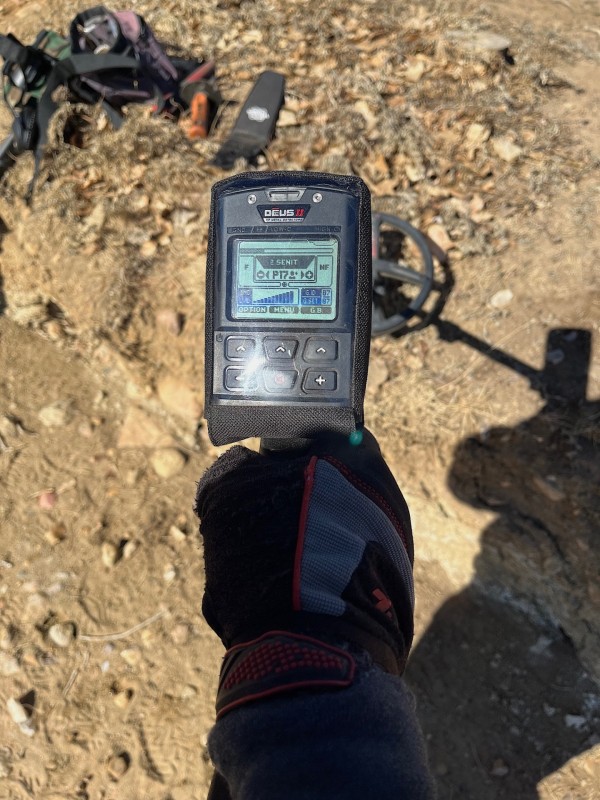
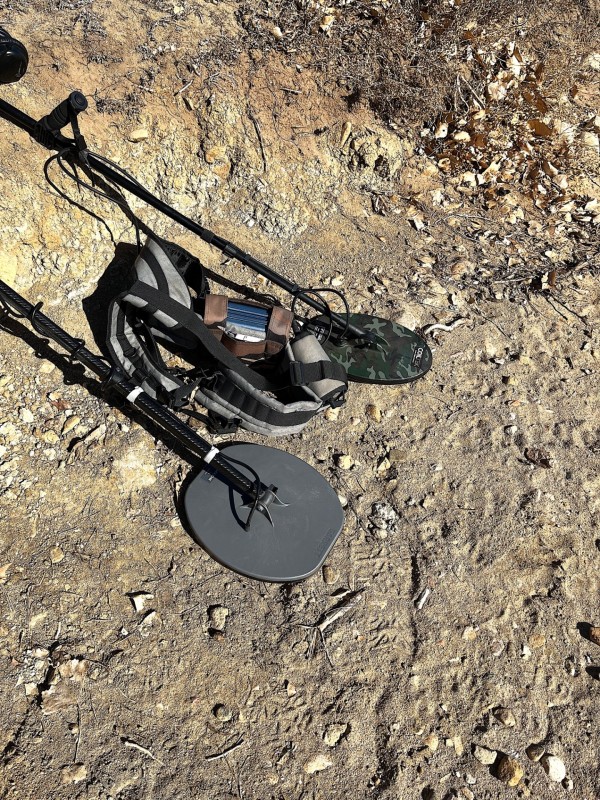
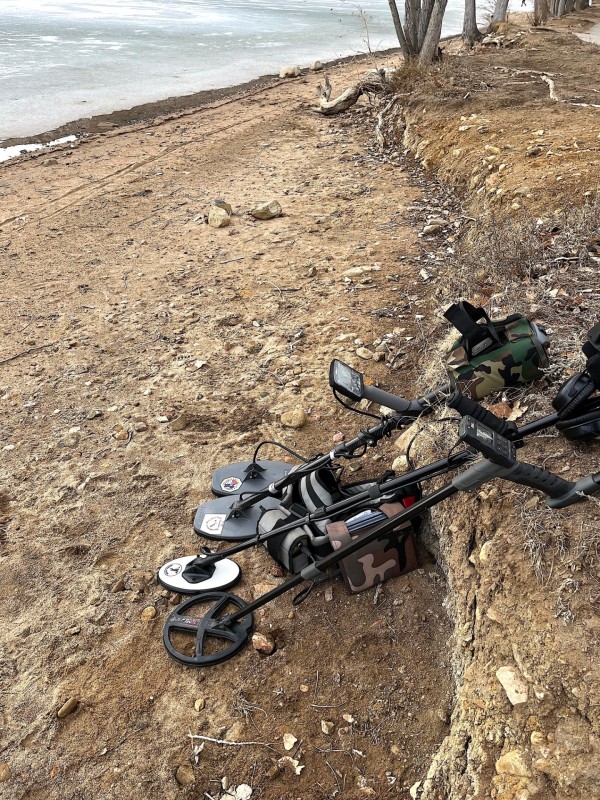
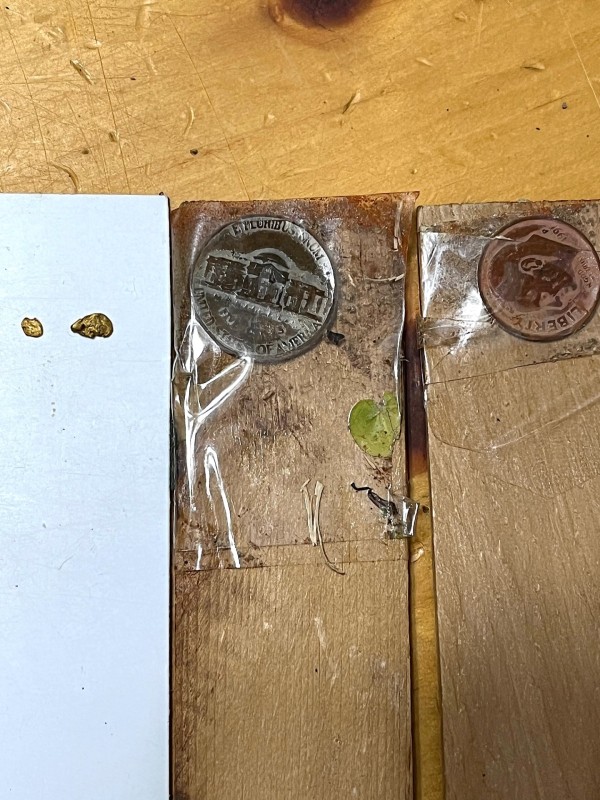
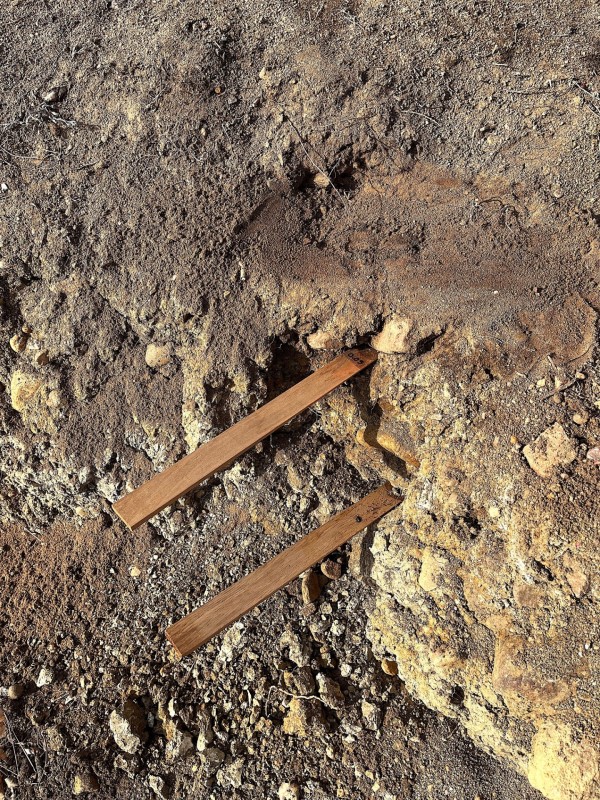
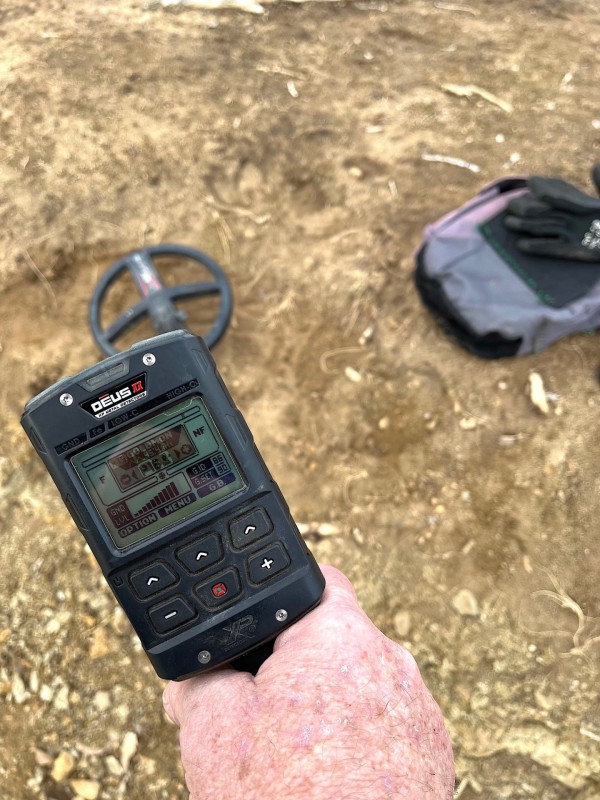
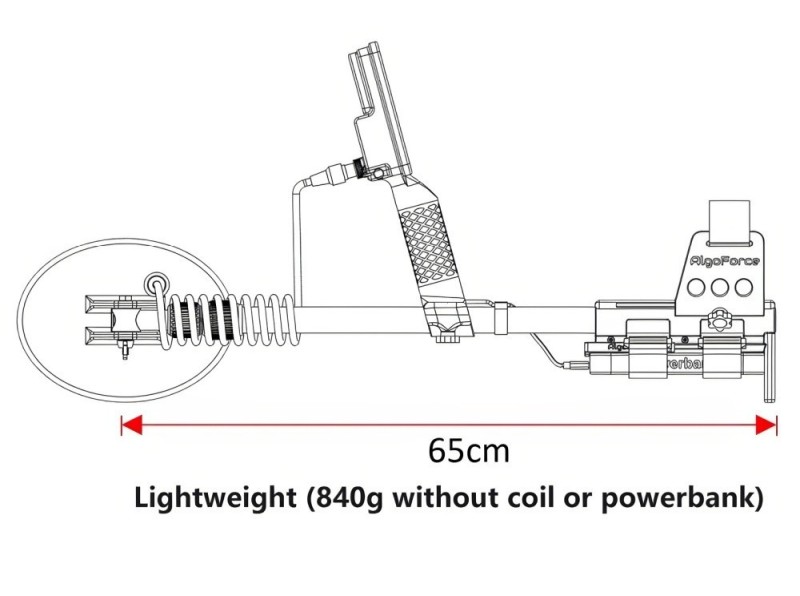
AlgoForce On VLF Type Gold
in AlgoForce Metal Detectors
Posted
I used to be in the "use a PI until I can't lift it to swing it anymore" camp and then use a VLF.
These latest PIs like the GPX 6000, Garrett Axiom and now the E1500 are making the need for a VLF at least for me, less and less. The last few times I hunted, the VLF basically stayed in my backpack. These lightweight PIs are just too much fun.